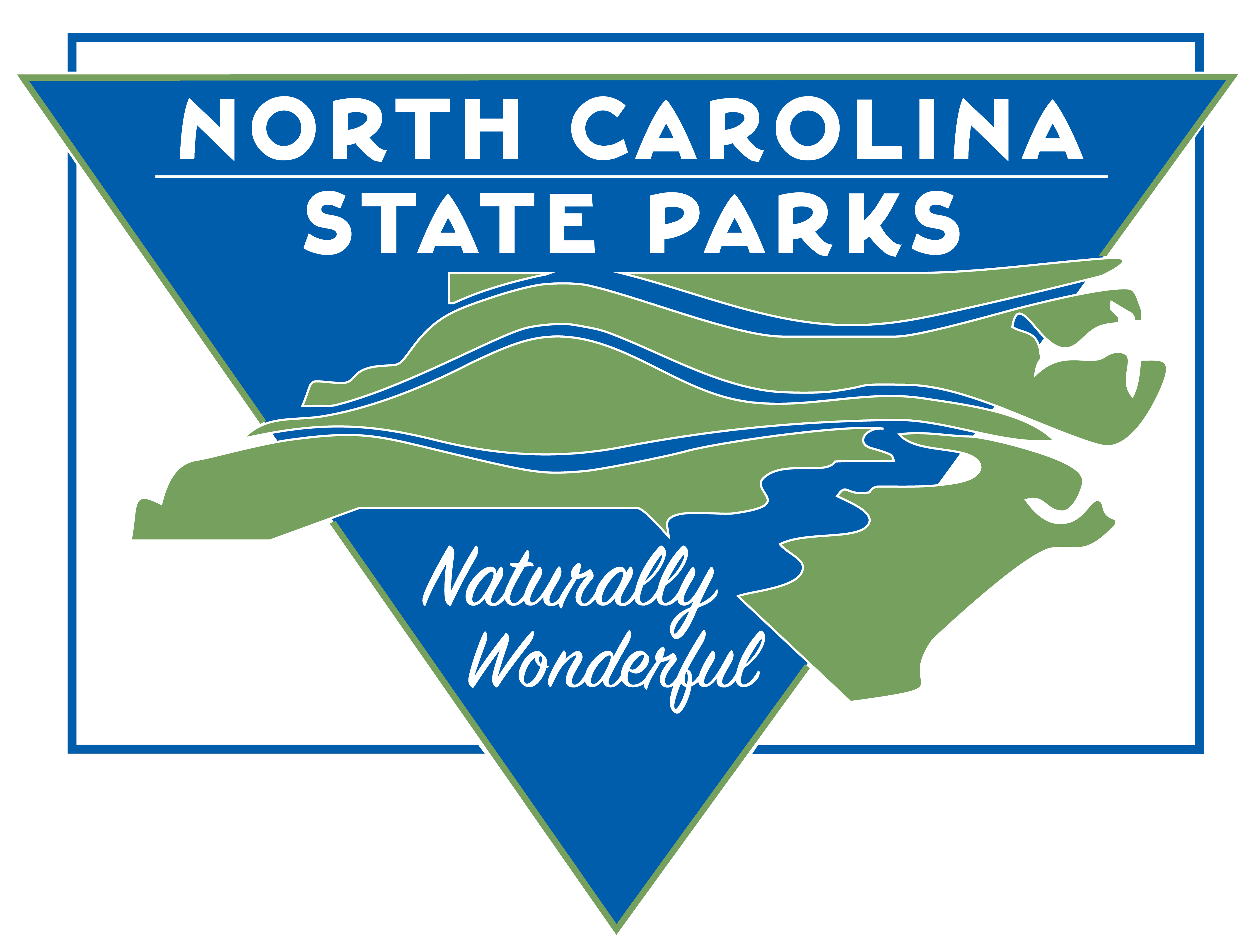| Scientific name | Morus rubra |
|---|---|
| Common name | Red mulberry; common mulberry; mulberry |
Top photo by M. Modlin at Chimney Rock State Park
As the year winds to a close, it becomes harder to make positive identification of the various trees throughout the park. Flowers and leaves make identification easier, and this time of year, most of the flowers have bloomed and the leaves have fallen. However, some of the trees still have identifiable characteristics that allows us to figure them out. One of the easiest that you can still identify is the red mulberry tree.
The red mulberry is a native tree, part of a family of trees that are found worldwide. Mulberry trees are critical parts of the local food web and produce a knobby, dark reddish black fruit that is eaten by birds, opossums, raccoons, and other animals. This time of year, the mulberry leaves turn a deep yellow-golden color, sometimes dotted with brown or rusty red. Younger mulberry tree leaves typically have multiple shapes, include a single-lobed oval leaf, a mitten-shaped leaf with two or three lobes, and sometimes a multi-lobed leaf. More mature trees may only have single lobed leaves (see the newsletter PDF for a photo of a leaf as seen in early fall).
Within the park, mulberry trees can be found near some of the old buildings and along the trail sides. Look for their yellow-golden leaves before they fall!
The Local Food Web
One of the terms used above was "local food web." A food web is a way of describing the relationships between plants and animals as they exist in our world. For example, a mulberry tree might produce fruits, which are eaten by a cardinal. The cardinal might fly to another location and drop the seeds from the fruit, which later grow into more mulberry trees. The same tree might harbor insects like leafhoppers and lacewings on its leaves, providing food for local chickadees or maybe even birds passing through on their annual migration. Those birds will make nests and lay eggs, and sometimes, the eggs will be eaten by other predators such as snakes and raccoons. The birds, the predators, and the mulberry itself may help provide nutrients back to the soil to help other species grow and thrive. In this example, the mulberry is the beginning of the food web, and part of the systems that support many other animals and plants.
What do you think would happen if that mulberry tree was killed or replaced by another species, maybe one that isn't native to the area? Probably not too much if it was just a single tree, but imagine acres of trees cut down or killed off by an invasive species. That part of the food web would suddenly be gone, and the whole structure it supports could collapse. Although there are other sources of food, the other plants and animals in the food web may not be as well adapted to them as they were to the original plan. The fruits may not be as nourishing or ripen at the proper time to support nesting birds with young. The new seeds might have a differently shaped shell that makes it difficult for some birds to open them. The trees may support different types of insects not normally eaten by the birds. There are many possible ways for the system to change.
Why Are Invasive Species a Problem?
When a new species is introduced to an area, it may not have the normal predators or limitations in the environment that help keep it under control in its native habitat. It may force out native species and cause disruptions to the food web that continue to grow as the new species becomes dominant. It's one of the reasons that the park rangers at Carvers Creek spend a lot of time monitoring and controlling the different invasive species that make their way into the park. Although it may not be obvious to us when we are enjoying the trails and picnic areas, the rangers have been working hard to pull up, cut down, and control invasives like Chinese wisteria, rattlebox, Japanese stilt grass, Bradford pears, and many, many others.
Living the Wild Life!
Since this is the last newsletter of the year, I would like to end it by giving you some ideas on how you can promote natural native diversity and support the food web in your own backyard. You could build a few birdhouses and place them in safe areas near food and a water source. That would attract birds who would spread native seeds and provide plenty of entertainment for an aspiring birdwatcher. You could plant native species like the red mulberry or some of the other trees we've talked about in this newsletter. One fun and easy way is to simply stop mowing and let the native grasses and plants take over! Now, you might get a few weird looks if you stopped mowing your entire yard! But if you can find a small space that you can let grow wild, maybe a 5- or 10-foot square plot, you will be amazed at what you can find growing there after a few seasons. It would be even better near a fence or around water. The water and fence will attract birds and animals that will help spread seeds, but don't worry if you don't have something like that. Any space that you let grow wild will show results.
Resources for Promoting Natural Native Diversity
- Nature's Best Hope: A New Approach to Conservation That Starts in Your Yard by Douglas Tallamy. Published in 2020 by Timber Press.
- National Wildlife Federation – Garden for Wildlife
- Stuff You Should Know Podcast: "Selects: What is an invasive species?"
- How to build a simple one-board birdhouse – from Birds & Blooms magazine
- North Carolina Native Plant Society: Recommended Native Species
